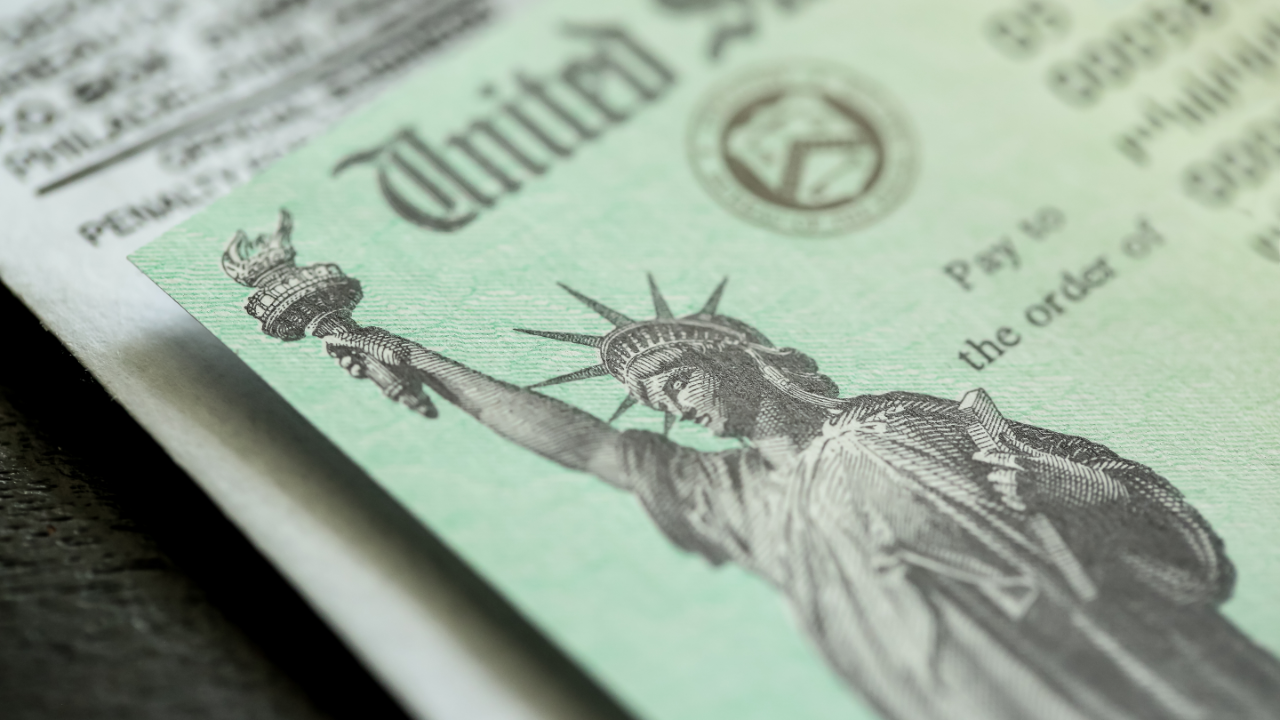Still missing your coronavirus stimulus check? Here’s what you should do

So, you never received a coronavirus stimulus check? Good news: There’s a document for that.
Americans who never saw the Economic Impact Payments (EIPs) for which they were eligible can claim what’s called a “Recovery Rebate Credit” when they file their annual income tax return for 2020, according to the IRS. That goes for both the first round worth $1,200 (or more) and the second totaling at least $600, in addition to the supplemental amount per each dependent in their household ($500 in the first round, $600 in the second).
All of that means taxpayers in the best of instances could see thousands of extra dollars when they file for the credit. Not filing by the May 17 deadline could leave money on the table.
But the reconciliation process isn’t exactly clear-cut. Here’s everything you need to know about filing for the “Recovery Rebate Credit,” including what it is, who’s eligible, how to file and how to guarantee that you see your funds as soon as possible.
What is a Recovery Rebate Credit?
The IRS has lots of different rules, regulations and terms that make things confusing for filers, but pay no attention to the man behind the curtain: The “Recovery Rebate Credit” is simply just another name for your stimulus check. And if you were one of the lucky Americans who received two EIPs with no problems, you technically just received an advance of that Recovery Rebate Credit.
Americans can claim that credit by filling out a new, special section (Line 30) on their 2020 “Form 1040” or “1040-SR” if they’re a senior. That also goes for taxpayers who normally don’t have to file a tax return, according to the IRS.
But rest assured: Receiving a stimulus check won’t come back to bite you. The IRS says that the credit will only increase the amount you receive as a tax refund or decrease the amount you owe, rather than subtract from the refund you’re entitled to. Your stimulus check also isn’t considered taxable income.
Who should apply for a Recovery Rebate Credit?
The IRS has prepared a special worksheet for Americans who think they might be eligible for a Recovery Rebate Credit on their 2020 tax return. You’ll have to fill that out when claiming your credit. But there are a few groups of people who might want to pay close attention in particular.
“The 2020 tax return is the great corrector for all changes, issues or lost money that you didn’t receive” with your stimulus check, says Mark Steber, senior vice president and chief tax officer at Jackson Hewitt. “You may be due $1,200, $1,800 or $2,400. The sky’s the limit if you’ve got three children and are married and haven’t gotten your payment.”
1. Americans who didn’t receive the full stimulus amount that they were entitled to
If you received a payment but you don’t think it was as much as it should’ve been, you should claim your Recovery Rebate Credit.
Americans should first think back to what they were eligible for from both rounds of stimulus payments. Individuals earning up to $75,000 in adjustable gross income (AGI) were eligible for the full $1,200 payment in March and the second $600 payment from late December and early January. Married couples earning up to $150,000 were eligible for payments twice that size. Those earners were also eligible for an extra $500 and $600 for every dependent claimed on their taxes.
After that, payments phased out by $5 per every $100 over those income thresholds. This is probably where it gets a bit trickier.
Because the first stimulus check was larger, payments phased out at a later point on the income scale than they did for the second round. Reduced $1,200 checks went out to individuals who made up to $99,000 a year and married couples who earned up to $198,000. In the second round, individuals and married filers were eligible for a partial check up until earning $87,000 and $174,000, respectively.
It’s important to calculate first for yourself how much you’re owed. Then, compare that with official documents from the IRS showing your stimulus check amount. Those can include the letter accompanying your payment, as well as another special form, “Notice 1444” or “Notice 1444-B,” which most likely came with your first check earlier in 2020.
You’ll also want to go back through your finances and verify that the amount you received didn’t match up with the total payment for which you were eligible. Also, make sure you didn’t already spend the money unknowingly.
“Did you get the money and your spouse took it? Or did you spend it and forget about it?” Steber says. “If you didn’t save your letters, it’ll be very important for you to review your bank account or (transaction) history to find out, so you have a chance to reconcile on your tax return.”
2. You had a lifestyle change in 2020 that wasn’t reflected in your 2019 taxes
A lot can change in a year, and it’s very possible the IRS didn’t have enough up-to-date information accurately reflecting your financial situation.
A few circumstances that could qualify you for more money: You had a baby in 2020, or adopted or fostered a child. Less common, say you share joint custody with a child but only rotate that responsibility every other year. You might be eligible for extra money by filing for a credit, and there are instances when your former spouse might pocket extra money as well.
“Say I filed with Susie Q. in 2019 and I got the stimulus checks for that child, and then my divorced spouse filed with Susie Q. for 2020. She would get the Recovery Rebate Credit as well,” says Mark Jaeger, director of tax development at TaxAct. “It’s a little bit of double dipping, but it is something that is allowed.”
Additionally, maybe you got married or divorced. Perhaps you graduated college and started working, meaning you’re no longer considered a dependent. And, as is likely the case for millions of Americans, perhaps you had a higher-paying job in 2019 but lost that position in 2020. Even individuals who were working in 2019 but retired in 2020 could be eligible for the credit.
These are just a sampling of circumstances that might mean you’re eligible for a stimulus check or a higher amount.
“There’s a lot of reasons why you may be due more that are all legitimate,” Steber says. “It’s real money, and it’s a lot of money.”
On the flip side, say you got a raise in 2020 that bumped you past the $75,000 income threshold. You wouldn’t be penalized for that by being forced to return a part or all of your stimulus check.
“A change in your situation can only help you when you file your 2020 taxes,” says Eric Bronnenkant, head of tax at Betterment.
3. You’re a member of a mixed-status household
Under the CARES Act, U.S. adults with a Social Security number (SSN) weren’t eligible for a stimulus check if they were in a mixed-status household, meaning one partner was undocumented or didn’t have an SSN. A recent law change, however, scraps that rule. Now, individuals would be able to receive both payments retroactively — meaning both the first and second stimulus payment — for the taxpayers and qualifying children of the family who have work-eligible SSNs.
You’ll want to reconcile that first amount with your Recovery Rebate Credit, if you didn’t receive it.
4. Americans who didn’t receive any stimulus checks at all
Many Americans out there just haven’t received any of their promised stimulus checks. If that’s you, you should jump at the opportunity to claim your credit.
A number of circumstances can cause these delays for you: Perhaps you’ve moved and the IRS doesn’t have your new address on file. Maybe the IRS did have the correct address or bank account information, but it never hit your checking account or perhaps got lost in the mail. All of these would be instances when you should apply to reconcile your payment on your tax return.
As always, it’s good practice to go back through your records and find any documents from the IRS showing your designated stimulus amount, if you have them. Then, look back through your deposit statements around the time when both stimulus checks might’ve been cashed or deposited (March/April for round one and December/January for round two).
The IRS’ “Get My Payment” tool will be helpful for tracking both of those checks’ statuses. That portal should also give you information showing the date of payment and the method (direct deposit or mailed payment), according to the IRS.
If all of your research validates these suspicions, it’s time to claim your Recovery Rebate Credit.
How to make sure you receive your credits as soon as possible
The Recovery Rebate Credit worksheet requires that you know the specific amounts you were supposed to receive, according to the IRS. By doing the investigation and calculation work in advance, you’ll most likely end up getting your stimulus check — and tax refund — faster.
“To get it correct, that cannot be overemphasized,” Steber says. “These Recovery Rebate Credits are real cash, and they sent out hundreds of millions in the two tranches. If you did in fact receive it and forget about it, it could add weeks to your tax return timeline.”
Your tax refund will be passed more quickly and safely if you electronically file and provide a direct deposit, the IRS says.
“Typically, the IRS is good at sending out refunds within a couple of weeks within electronically filing,” Bronnenkant says.
Not included in 2020’s Recovery Rebate Credit is a third stimulus payment worth $1,400 or more, distributed to Americans beginning in mid-March after President Joe Biden signed the $1.9 trillion American Rescue Plan. Taxpayers will most likely have to wait until 2021 to claim those missing relief payments, Jaeger says.
Bottom line
Before the coronavirus pandemic, recurring relief payments from the federal government were virtually unheard of. The IRS and Treasury Department were forced to quickly dive into unknown territory so Americans could get much-needed relief as soon as possible. Issues are bound to arise for those reasons.
Americans should gather all the information that’s needed and be sure to consult with an expert if they have any more questions about filing for the credit. And when in doubt, claim the money, as it’s unlikely you’ll be able to get it back after the 2020 filing season is over.
“The IRS will not be revisiting this unless you do,” Steber says. “Make sure you get all of your money or talk to someone who understands what you need to do. The IRS is not under review to make sure you got your money unless you put it on your return and apply for it.”






